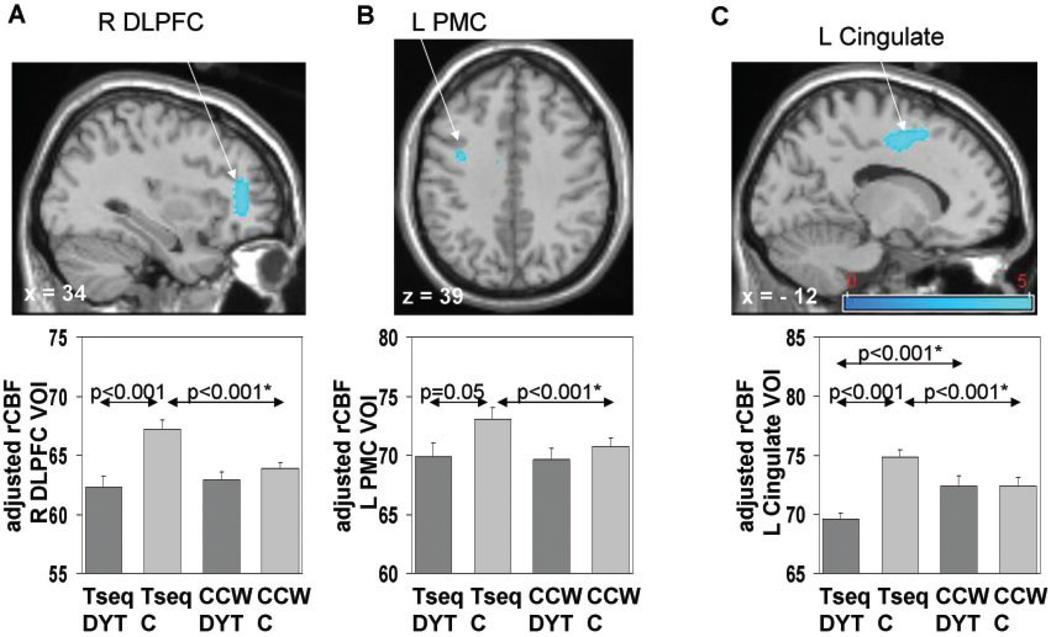Fig. 2.
Brain regions in which learning-related activation responses during trial-and-error-based sequence-learning were reduced in nmDYT1 carriers relative to controls (Table 3, see text): SPM{t} maps (top panel) were superimposed on a single-subject MRI T1 template (x, y, z coordinates in MNI space indicate the position of the slice). Bar diagrams (bottom) illustrate adjusted regional cerebral blood flow (rCBF) during sequence learning (TSEQ) and during the motor reference task (CCW) in the respective cluster/VOI (mean ± SE) in the DYT1mutation carriers (dark gray) and controls (light gray). Decreased learning-related activation was present in the DLPFC (A) as well as in the left dPMC (B) with significant activation in controls, but not in carriers of the DYT1mutation. Additionally, nmDYT1s deactivated the anterior cingulate cortex (B), while controls activated this region. Significant contrasts of post hoc VOI comparisons are displayed (P-values of paired T-tests marked with asterisk). Brain activation during the baseline motor task was comparable across groups in all displayed regions (P > 0.2). (The colour stripe represents Tvalues thresholded at 3.5, P < 0.001.)

